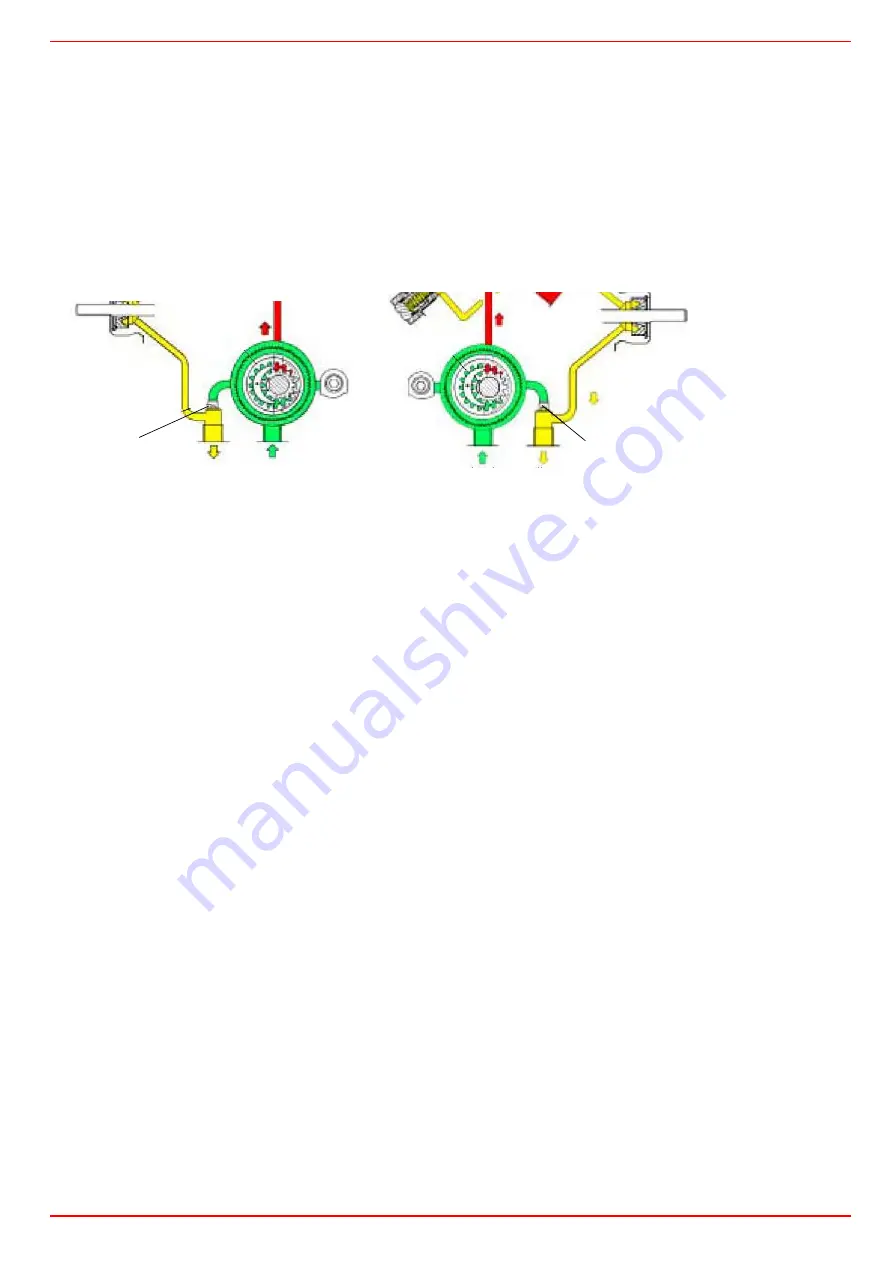
C.I.B. UNIGAS
- M039136CC
10
Hydraulic system
The provided pumps can be installed both into single-pipe and double-pipe systems.
Single-pipe system:
a single pipe drives the oil from the tank to the pump’s inlet. Then, from the pump, the pressurised oil is driven to
the nozzle: a part comes out from the nozzle while the othe part goes back to the pump. In this system, the by-pass pulg, if provided,
must be removed and the optional return port, on the pump’s body, must be sealed by steel plug and washer.
Double-pipe system:
as for the single pipe system, a pipe that connects the tank to the pump’s inlet is used besides another pipe that
connects the pum
p
’s return port to the tank, as well. The excess of oil goes back to the tank: this installation can be considered self-ble-
eding. If provided, the inside by-pass plug must be installed to avoid air and fuel passing through the pump.
Burners are factory-set for double-
pipe
systems. They can be suited for single-pipe system (recommended in the case of gravity feed)
as decribed before.
To change from a 1-pipe system to a 2-pipe-system, insert the by-pass plug
G
(as for ccw-rotation- referring to the pump shaft).
Caution:
Changing the direction of rotation, all connections on top and side are reversed.
Bleed
Bleeding in two-pipe operation is automatic : it is assured by a bleed flat on the piston. In one-pipe operation, the plug of a pressure
gauge port must be loosened until the air is evacuated from the system.
About the use of fuel pumps
z
Make sure that the by-pass plug is not used in a single pipe installation, because the fuel unit will not function properly and damage
to the pump and burner motor could result.
z
Do not use fuel with additives to avoid the possible formation over time of compounds which may deposit between the gear teeth,
thus obstructing them.
z
After filling the tank, wait before starting the burner. This will give any suspended impurities time to deposit on the bottom of the
tank, thus avoiding the possibility that they might be sucked into the pump.
z
On initial commissioning a "dry" operation is foreseen for a considerable length of time (for example, when there is a long suction
line to bleed). To avoid damages inject some lubrication oil into the vacuum inlet.
z
Care must be taken when installing the pump not to force the pump shaft along its axis or laterally to avoid excessive wear on the
joint, noise and overloading the gears.
z
Pipes should not contain air pockets. Rapid attachment joint should therefore be avoided and threaded or mechanical seal junc-
tions preferred. Junction threads, elbow joints and couplings should be sealed with removable sg component. The number of junc-
tions should be kept to a minimum as they are a possible source of leakage.
z
Do not use PTFE tape on the suction and return line pipes to avoid the possibility that particles enter circulation. These could depo-
sit on the pump filter or the nozzle, reducing efficiency. Always use O-Rings or mechanical seal (copper or aluminium gaskets) jun-
ctions if possible.
z
An external filter should always be installed in the suction line upstream of the fuel unit.
G
G

























